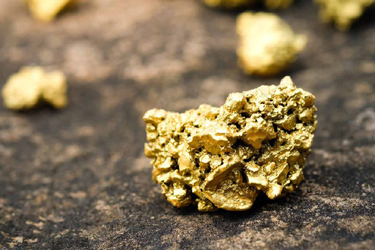
From being used as an ornament to medals in competitions, currency, and decorations for sacred places, seems like the world is revolving around gold. Let's discover why gold is one of the most valuable metals in the world.
What does gold symbolize? Gold wields so much power in society. It's a symbol of wealth, power, and prosperity. Small town prospectors are hitting the streams with their pan and sieve hoping to get their mitts on these elusive mineral deposits while the rich splash their cash around for those Grillz and gold-painted cars.
Interesting facts about gold
What are the characteristics of gold? Gold is a malleable metal and an excellent conductor of both heat and electricity. It has unique electrochemical properties that make it highly resistant to corrosion and oxidation. That is why it's the king of all metals: Very popular, precious like the diamonds, and more valuable than notes and coins. Fun facts about gold include:
- It's a dense, soft, malleable, ductile, and shiny metal. It's the most malleable and ductile of metals: One gram of gold can be beaten into a sheet one square meter in size. And it can also be hammered to transparent-like thin.
- Its greek name is aurum, meaning glow of sunshine. From this, it gets its symbol, Au. It has a unique yellow color.
- A lot of gold comes from South Africa and, of late China too.
- The price of gold, however, does fluctuate depending on economic events.
- It's a popular medal used to reward exceptional performance and achievement in sports, academics, etc.
Why is gold perpetually important and a valuable commodity?
What makes gold the king of precious metals is its unique chemical and physical properties. From its characteristic yellow color to its resistance to corrosion and oxidation topped by the fact that it's an elusive metal, humans can't resist competing for gold. Let's dig in and see:
1. It's easy to work on
Gold's prime characteristic is that it's dense yet soft, malleable, and ductile. The fact that gold is easy to work with makes it a favorite choice for decoration and other industrial purposes which also increases its price.
2. The price of gold is not fixed by any organization
The price of gold depends upon the cost of producing it and how much people are willing to pony up for it. Compared to other metals, gold is relatively expensive to produce, which means its base price will always be fairly high.
2. Scarcity
Those who understand metals will tell you gold is not the rarest of metals. But what makes it scarce is that it is challenging to locate and extract this mineral deposit in large quantities if one does not have those costly and sophisticated machineries for processing tons of low-grade ores each day.
In fact, only a few enthusiasts who traversed the western part of the US in search of gold ended up with a valuable deposit. And of these numbers, many were experienced, gold miners. The truth is, prospecting and panning for gold is not as easy as it seems. It's estimated that all the world's mined gold can fit within an Olympic swimming pool. There are 171,300 tonnes of gold in the world.
3. Unique aesthetic and chemical properties
How does gold differ from other metals? Gold has a characteristic yellow color that glows in the sun. This is due to a unique chemical arrangement. The chemical arrangement also makes it less electrochemically active. It does not readily oxidize; so, while it's rare, it maintains a stable volume over time and doesn't rust. This is unlike what we see with other metals such as aluminum and iron: while they are abundantly available, they waste away due to oxidation and corrosion.
What are the uses of gold?
Gold has a universal appeal; it is used to make jewelry and ornaments. It's used as paint because it is corrosion-resistant. Investors put their money in gold because when the value of paper money begins to fall, people direct their investments to gold, making it more expensive. Therefore, while the price of gold is volatile in the short run, it has always maintained its precious value over time. Gold is also used in dentistry, electronics, medicine to treat cancers, arthritis, etc.
In the early days, gold was used as ornaments for kings and noble people in society. It was also used as some form of currency. It was a symbol of affluence, grandeur, and prosperity and still is. Kingdoms went to war over it. It was the prize in battles and competitions. Bring the gold home then, won't you?
